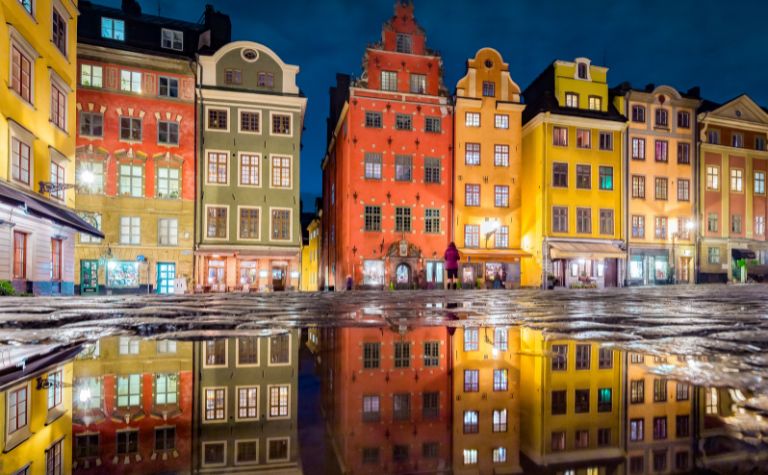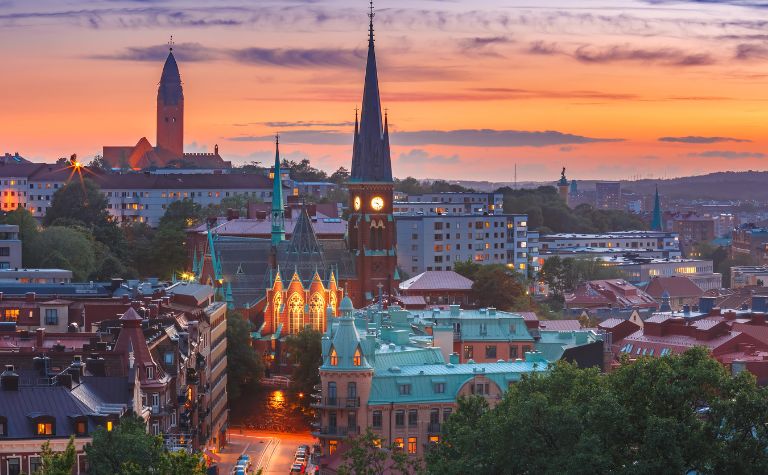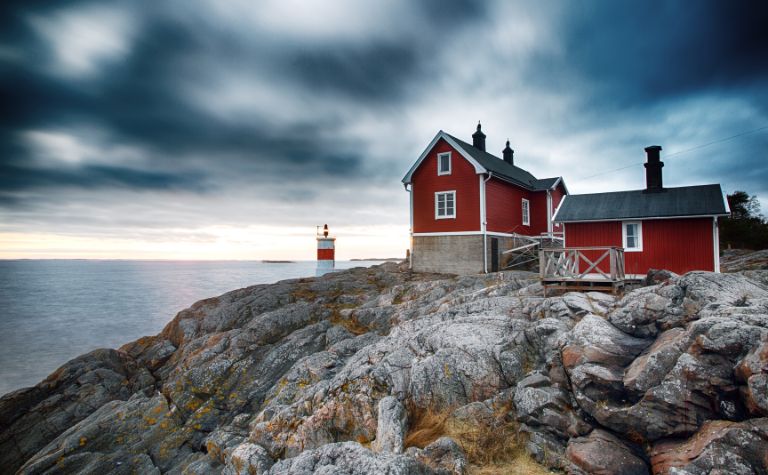Sweden, a country in Northern Europe, isn’t among the most visited Nordic countries.
However, this doesn’t mean there isn’t anything to do in Sweden. Sweden has several attractions associated with its rich natural and cultural heritage.
When in Sweden, visitors can explore the natural beauty of the country, lake-rich Värmland, which has activities like timber rafting and fishing, and stay in the ice hotel.
Visitors can also explore cultural and historical locations in Stockholm, Sörmland, and Kalmar.
There are many national parks in the country which are recommended by hikers, including the Sarek National Park.
The park is known as one of “Europe’s last true wilderness areas” and doesn’t have marked trails, which should suit the most adventurous and experienced hikers. [1]
Also, see How to Move to Sweden to learn more.

What Cultural Experiences Can Tourists Have in Sweden?
From the country’s Viking heritage to modern art, there are several cultural experiences that tourists can witness and experience when visiting Sweden.
Cultural experiences tourists can have in Sweden include visiting Swedish Sápmi to learn about the indigenous Sami people and participating in the Walpurgis celebrations.
Tourists can also participate in Midsummer celebrations in Dalarna and explore the castles and museums around the country.
The Sami people are spread across the Nordic countries and are the original domesticators of the reindeer. [2]
Efforts are made to ensure that visitors to Swedish Sápmi experience the culture authentically and respectfully.
Walpurgis, Valborg is a spring celebration that visitors can experience if they’re in the country on April 30. Most celebrations are held in public parks around Sweden.
Midsummer is also celebrated everywhere in Sweden, but the best place to experience it is in Dalarna, including the famous Maypole.
Sweden is home to some of the most beautiful fairytale-esque castles, and Sörmland county near Stockholm is the best place to explore castles, manors, and heritage buildings.
The capital city of Stockholm has several museums related to Sweden’s history and culture, including the Royal Djurgården and the Viking Museum.
Other important centers of culture and heritage in Sweden are Malmö and Halland, which have a number of modern art and design museums open to visitors.
Sweden’s strong contemporary art scene is supported by its many avenues of exhibition, including museums, galleries, and sculpture parks like the one by The Wanås Foundation.[3]
Also, see What Is Sweden Known For? to learn more.

What Natural Places in Sweden Are Worth Visiting?
Sweden is full of natural beauty, from lakes and rivers to woodlands and beautiful islands.
All of these natural places in Sweden offer opportunities to sight-see, explore, and experience nature in as much of an unspoiled and untouched state as possible in today’s world.
Natural places in Sweden worth visiting include the Öland, known for its geological features and landscapes, the Swedish High Coast, and the mountainous Laponian area.
All of these places are listed on UNESCO’s World Heritage Sites, making them important destinations to visit.
Öland is the second largest island in Sweden and is integrated as a part of Kalmar County. When it comes to the region’s natural wonders, it is best known for its limestone plain called the Stora Alvaret.
This plain is home to rare species of vegetation and is also a popular location for bird watching. [4]
The High Coast of Sweden is an important region for research on the phenomenon called post-glacial rebound, where the land rises after glaciers melt.
It is one of the best regions to go hiking in Sweden, particularly along the High Coast Trail. Popular locations along the coast include the Skuleskogen National Park and Skule Mountain.
Sweden has a number of beautiful national parks that are excellent for hiking in.
These parks are among the best locations to experience the midnight sun phenomenon, where the sun refuses to set at the height of summer.
The parks are also great locations to view the Northern Lights in the winter.
In Northern Sweden, the Laponian area is known to be the world’s largest unmodified natural area that is still cultured by indigenous people.
The great Sarek Park is part of this area, as are other national parks like Muddus and Padjelanata. The region is rich in mountain peaks, rivers, and lakes.
Also, see Why Don’t Swedes Get Married? to learn more.

What Historical Places Are Good To Visit in Sweden?
In Sweden, it is easy for visitors to literally step into history with how full the country is of historical buildings and regions.
Several sites have made their way onto the World Heritage List, but there are many more historical places in Sweden that are not.
Historic places that are good to visit in Sweden include the rock carvings in Tanum, the Drottningholm Palace, and Kalmar Castle. Birka and Hovgården are archaeological sites from the Viking Age.
Gammelstad Church Town and Karlskrona are uniquely preserved cultural regions.
The rock carvings in Tanum were listed as a World Heritage Site due to the sheer volume of carvings in Tanum, spread across 600 panels.
These carvings are believed to have been made by people living through the Scandinavian Bronze Age and Iron Age.
The Drottningholm Palace serves as the private residence of the Swedish royal family.
Built in the 17th century, the palace design was inspired by the Palace of Versailles and is extremely well preserved. [5]
The Drottningholm Theater in the compound is also important to visit as it still uses much of the original machinery from the 18th century in all performances.
The Kalmar Castle is built along the seaside and houses the Kalmar County Museum.
This castle began as a defense tower built in 1180 and came to be known as the “key to the kingdom.” It is a beautiful Renaissance castle that hosts many events throughout the year.
Sweden’s Viking history is visible in the archaeological sites of Birka and Hovgården. The sites are well-preserved, with surviving structures that indicate the town, cemeteries, and the royal area.
The Gammelstad Church Town is one of the remaining 16 church villages in Sweden and the best-preserved example of towns from the 1600s.
Similarly, Karlskrona is a baroque city, and the only one in Sweden spread across 30 islands.
Conclusion
There are many natural, cultural, and historical locations to visit in Sweden. Visitors can hike, explore, and experience important events in the country.
Also, see Sweden vs. Finland: What’s the Difference? to learn more.
References:
[1] Source
[2] Source
[3] Source
[4] Source
[5] Source
